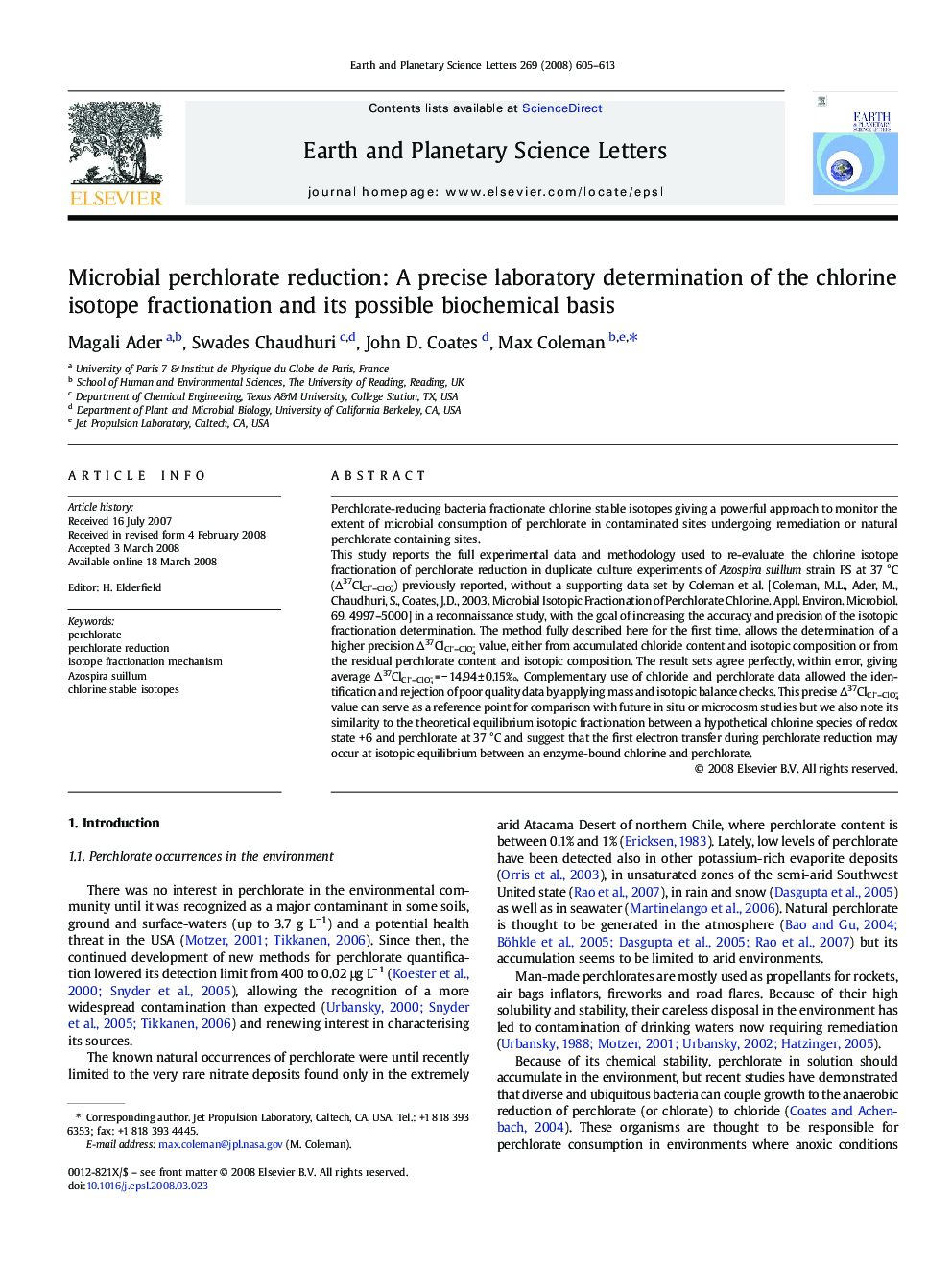| Article ID | Journal | Published Year | Pages | File Type |
|---|---|---|---|---|
| 4679800 | Earth and Planetary Science Letters | 2008 | 9 Pages |
Perchlorate-reducing bacteria fractionate chlorine stable isotopes giving a powerful approach to monitor the extent of microbial consumption of perchlorate in contaminated sites undergoing remediation or natural perchlorate containing sites.This study reports the full experimental data and methodology used to re-evaluate the chlorine isotope fractionation of perchlorate reduction in duplicate culture experiments of Azospira suillum strain PS at 37 °C (Δ37ClCl−–ClO4−) previously reported, without a supporting data set by Coleman et al. [Coleman, M.L., Ader, M., Chaudhuri, S., Coates, J.D., 2003. Microbial Isotopic Fractionation of Perchlorate Chlorine. Appl. Environ. Microbiol. 69, 4997–5000] in a reconnaissance study, with the goal of increasing the accuracy and precision of the isotopic fractionation determination. The method fully described here for the first time, allows the determination of a higher precision Δ37ClCl−–ClO4− value, either from accumulated chloride content and isotopic composition or from the residual perchlorate content and isotopic composition. The result sets agree perfectly, within error, giving average Δ37ClCl−–ClO4− = − 14.94 ± 0.15‰. Complementary use of chloride and perchlorate data allowed the identification and rejection of poor quality data by applying mass and isotopic balance checks. This precise Δ37ClCl−–ClO4− value can serve as a reference point for comparison with future in situ or microcosm studies but we also note its similarity to the theoretical equilibrium isotopic fractionation between a hypothetical chlorine species of redox state + 6 and perchlorate at 37 °C and suggest that the first electron transfer during perchlorate reduction may occur at isotopic equilibrium between an enzyme-bound chlorine and perchlorate.
